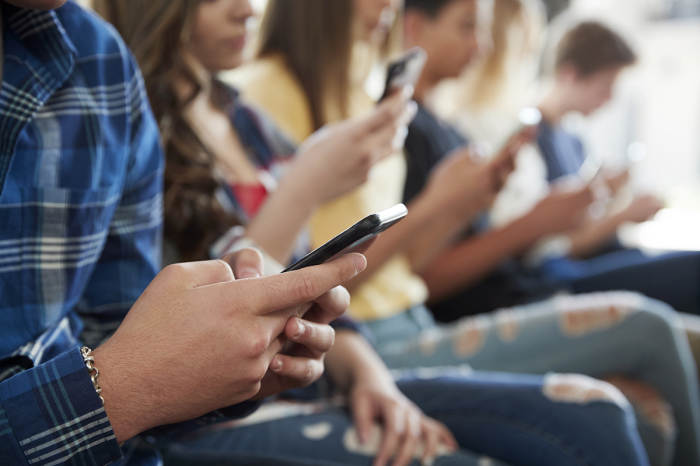
As students return to school, many are finding one rule change that’s not to their liking.
Numerous school districts throughout the country are instituting policies prohibiting the use of cellphones and other electronic devices.
Several school districts in North Texas, for example, including Arlington, Garland, Mesquite, Frisco, Plano, Allen and Fort Worth, have adopted an “out of sight” policy, NBC’s DFW affiliate reported this week as classes got underway. The policy requires students to turn off their phones and keep them stored in a backpack or locker during the school day, including lunch and other non-instructional periods.
Texas Gov. Greg Abbot signed House Bill 1481 into law earlier this summer, which mandates that all public school districts in the state have a policy in place regarding students’ use of personal electronic devices by Sept. 18.
Several educators, such as Kalee McMullen, executive director of instructional leadership for the Grapevine-Colleyville Independent School District, strongly believe the law will eliminate distractions and improve students’ focus.
“It has been a huge distraction — that constant vibrating of notifications and that constant ringing in the classroom. That’s not what’s best for students,” McMullen said. “And there’s a lot of research that shows how detrimental that is to focus, to the acquiring of knowledge, and to that retention of the content over time.”
McMullen told NBC 5 that teachers in the Grapevine-Colleyville school district have witnessed positive changes for themselves and their students ever since the administration enacted a policy prohibiting the use of personal communication and electronic devices last year.
“[Teachers] did see students who are less distracted, more engaged,” she said. “We saw [bad] behaviors reduced. So as a whole, it had a very positive impact across all of our campuses.”
If a parent needs to contact their child during the school day, many Texas school districts already have policies in place advising them to call the front office, the news station added.
Texas isn’t the only state where school districts have taken steps to ban or reduce the use of phones during school hours.
Several students and educators within the Los Angeles Unified School District (LAUSD) also reported observing positive changes after the school board voted to expand its existing phone ban last summer, LAist reported. The new policy, which includes smartwatches and earbuds, also bans phone use during lunch and passing periods.
Two months after LAUSD voted on the policy, California Gov. Gavin Newsom signed Assembly Bill 3216, also known as the Phone-Free School Act, which requires schools to ban or limit the use of smartphones during school hours. The bill also mandates that every public school district and charter school have a policy limiting smartphone use by July 1, 2026.
Jessica Quindel, a math teacher at Venice High School in Los Angeles, said her students were “bouncing off the walls” after the ban started in February. The math teacher explained that she provided her students with things like stress balls and fidget toys.
“It’s a challenge, but it’s a good one because it means that kids are not looking at their phones, and instead they’re trying to learn,” Quindel said.
One Venice High School student named Sophia said that many of her peers still bring their phones to class despite the ban, according to LAist.
“The more rules you enforce, the sneakier people get,” the student said. “The more you imply that you don’t trust students, the more they give you a reason not to trust them.”
According to an updated Campus Safety report from July 14, California is among more than 20 states and the District of Columbia that have adopted policies requiring school districts to enact policies addressing the use of electronic devices on campus during school hours.
School districts throughout the country have enacted these policies amid ongoing concerns about the impact that social media and screen time have on youth mental health.
A Pew Research Center survey of teenagers aged 13 to 17 found that 96% of teens reported being online daily, and nearly half said they’re online almost constantly.
The survey, conducted from Sept. 18 through Oct. 10, 2024, also found that roughly half of the teenage respondents said they check Instagram or Snapchat daily, and about one in 10 reported that they visit these social media platforms almost constantly.
Last year, JAMA published a study of over 4,200 adolescents in the United States, finding that “31.3% had increasing addictive use trajectories for social media and 24.6% for mobile phones over four years.” The study claimed that youth who are addicted to screens are at a higher risk for suicidal behaviors.
Samantha Kamman is a reporter for The Christian Post. She can be reached at: samantha.kamman@christianpost.com. Follow her on Twitter: @Samantha_Kamman




